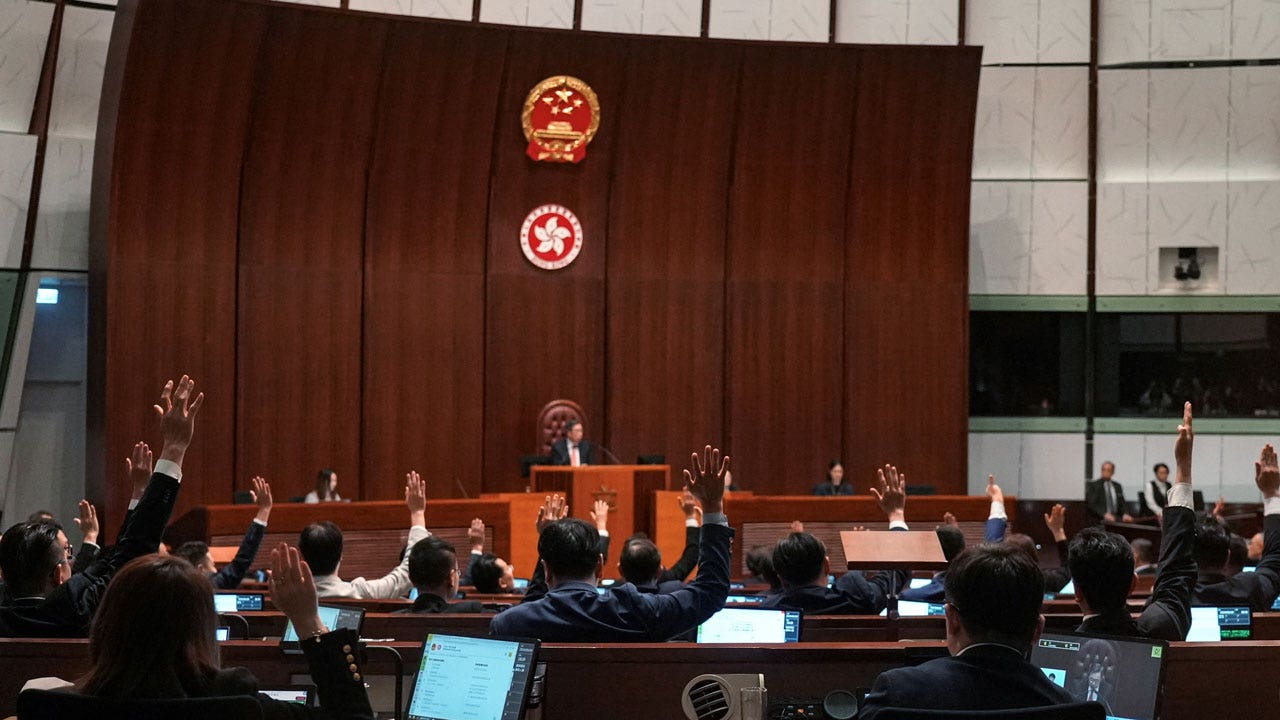As the Russian military launched its offensive on the eastern Ukrainian city of Avdiivka last fall, Ukrainian troops noticed a change in their tactics as column after column of Russian forces were ravaged by artillery fire.
Russian forces divided their infantry formations into smaller units to avoid being shelled, while the amount of Russian airstrikes increased to hammer the city’s defenses.
It was one of several adjustments the Russians made to help reverse their fortunes after a disastrous first year. But these changes were obscured by one glaring fact: The Russian military was still far more willing to absorb big losses in troops and equipment, even to make small gains.
Russian forces have a different threshold of pain, one senior Western official said this month, as well as an unorthodox view of what is considered an acceptable level of military losses.
Hundreds of thousands of both Ukrainian and Russian soldiers have been wounded or killed since the start of Russia’s full-scale invasion, including tens of thousands last year in the battle for the eastern city of Bakhmut. Another town to the south, Marinka, fell to Russia in January, after heavy fighting and more losses.
Avdiivka was among the most costly. The various Russian casualty estimates circulating among military analysts, pro-Russian bloggers and Ukrainian officials suggest that Moscow lost more troops taking Avdiivka than it did in 10 years of fighting in Afghanistan in the 1980s.
But casualty numbers are difficult to verify — inflated by the side inflicting casualties and downplayed by the side suffering them — leaving the true cost unknown. The official figure of Soviet dead in Afghanistan, around 15,000, is considered to be significantly understated.
One prominent military blogger wrote that the Russians had lost 16,000 troops at Avdiivka, a number that for now remains impossible to confirm.
“Despite Russia’s heavy losses in Avdiivka, they still have a manpower advantage along the front and can continue assaults in multiple directions,” said Rob Lee, a senior fellow with the Foreign Policy Research Institute, which is based in Philadelphia.
Russia’s slow grind forward comes as European nations move to bolster support for Ukraine and strengthen their own protections against potential Russian aggression. On Monday, NATO cleared the final hurdle for approving Sweden’s membership, less than a year after Finland joined, an expansion of the military alliance that defies the hopes of President Vladimir V. Putin of Russia of fracturing the unity of his adversaries.
President Volodymyr Zelensky of Ukraine said on Sunday that 31,000 Ukrainian soldiers had died fighting Russia. His comments drew notice for how rare they were; participants in war hardly ever reveal casualty numbers. But most Western analysts and officials say the toll is far higher.
Since the start of the invasion, Russia has been willing to pay a particularly high cost to advance in the area of eastern Ukraine known as the Donbas, where Avdiivka is. Parts of this traditionally Russian-speaking region have been occupied by Russia’s proxies since 2014, and in justifying the full-scale invasion, the Kremlin has spuriously claimed to be defending its Russian speakers, saying they want to be part of Russia.
Some military analysts say taking full control of the Donbas is the bare minimum the Russian government needs to present the invasion of Ukraine as a victory at home. That perhaps explains Moscow’s willingness to absorb huge losses to make marginal advances.
Avdiivka has been strategic as well as symbolic for Russian war propaganda because of its proximity to Donetsk, the Donbas’s largest city, which has been under the Russian-backed occupation since 2014. Securing Avdiivka would move Ukrainian artillery away from the city, reducing civilian casualties and pressure on rear supply lines.
The Kremlin’s propensity to fire more shells, mass more people and lean on a much larger and capable air force in this war allowed it to gradually turn the tide against Ukraine’s deep defenses in Avdiivka. The huge cost in wounded and dead, some analysts say, was just the byproduct of a strategy that largely achieved its goal, despite the loss of men and matériel, especially as Western military aid and Ukrainian ammunition subsequently dwindled.
At least for now.
A Russian military analyst close to the defense industry, Ruslan Pukhov, wrote last week that the assault on Avdiivka was part of a wider Russian strategy of pressuring Ukrainian forces along the entire 600-mile front line with thrusts and probes to exhaust the enemy “by a thousand cuts.”
“Such a strategy, however, is quite costly for the Russian Armed Forces in terms of losses, which could lead to depletion of its forces,” Mr. Pukhov wrote in a Russian current affairs magazine. “This, in turn, could give the Ukrainian side the initiative once again.”
Most analysts, however, are issuing sobering assessments of Ukraine’s prospects for 2024 if it does not receive American aid. As the war enters its third year, both sides are struggling to find enough men to continue fighting at the same level of intensity. Russia’s much larger population, about 144 million, which is three times that of Ukraine, gives it a significant edge in manpower.
The scale of Russia’s losses has partly negated the impact of this arithmetic.
The Kremlin’s decision to call up 300,000 men in September 2022 — for the first time since World War II — has shocked and unnerved the nation, according to polls. Hundreds of thousands of men had already fled the country when the war began, threatening to shatter the image of normalcy cultivated by Mr. Putin.
Since then, the government has tried to postpone another round of mobilization for as long as possible. Instead, it has boosted financial and legal incentives to attract convicts, debtors, migrants and other vulnerable social groups to the front as volunteers. It has also begun to strictly enforce the country’s previously lax mandatory military service for young men.
In a post published on the Telegram messaging app on Feb. 18, a pro-war Russian military blogger cited an anonymous military source claiming that since October, Russian forces had sustained 16,000 “irreplaceable” human losses as well as that of 300 armored vehicles in the assault on Avdiivka. The Ukrainian forces had sustained 5,000 to 7,000 irreplaceable human losses in the battle, the blogger, Andrei Morozov, wrote.
These claims could not be independently verified.
Mr. Morozov wrote that he had decided to publish the Avdiivka losses to hold Russian commanders accountable for what he portrayed as a needlessly bloody campaign. He deleted his post two days later, claiming in a series of subsequent posts that he had been pressured to do so by Russian military commanders and Kremlin propagandists.
In those posts, Mr. Morozov — who was considered among bloggers to be fairly accurate in his reports but also emotionally volatile — talked about ending his own life. He was found dead hours later, last Wednesday, according to his lawyer.
The Russian invasion of Ukraine has broken down into a relatively predictable rhythm: Neither side has the capacity to launch massive attacks that breach enemy lines and that allow for rapid gains on the battlefield. Instead, smaller units push ahead, relying heavily on artillery and drones to gain each scrap of ground.
Despite their losses in Avdiivka, U.S. officials predict that Russia will continue to put pressure on Ukrainian forces across multiple parts of the front line, hoping Kyiv’s units are degraded. The battlefield defeat, along with declining morale — exacerbated by the United States’s failure to continue supplying ammunition — might give the Kremlin’s formations an opportunity to exploit the situation on the ground.
The Russian military does not, however, have the kind of reserve forces that could immediately exploit the weakened defenses created by the retreat from Avdiivka, those officials said. American intelligence agencies have assessed that the Russian military command had hoped to create a force capable of quick frontline breakthroughs, but that the plan was dashed by the need to reinforce their defenses during last year’s Ukrainian counteroffensive.
Attacking well-entrenched positions means the assaulting force is at far greater risk: Those troops are exposed, and retrieving battlefield wounded and dead is exponentially more difficult than for those troops in a trench. Ukrainian troops have often been astounded by the amount of dead and wounded Russian soldiers they see strewed across the battlefield.
Still, the Russian troops keep coming. And with artillery ammunition critically low, the Ukrainians are being much more selective about when to use it. One unit commander said he had asked for fire support on a group of Russian soldiers only to be denied: There weren’t enough Russian troops to warrant a strike.
“You can’t really stop them,” said the commander, insisting on anonymity for security reasons. “While the front ones are moving, they’re bringing others up from the rear.”
Julian E. Barnes and Eric Schmitt contributed reporting from Washington.






